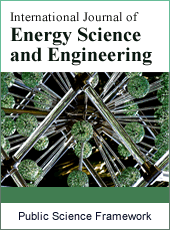International Journal of Energy Science and Engineering
Articles Information
International Journal of Energy Science and Engineering, Vol.1, No.3, Jul. 2015, Pub. Date: Jun. 30, 2015
Investigation of the Influence of Active Material Structure on High Rate Discharge Performance of VRLA Batteries
Pages: 115-125 Views: 5679 Downloads: 1268
[01]
Alessandro Mariani, Centre for Automotive & Power Systems Engineering (CAPSE), Faculty of Computing, Engineering and Science, University of South Wales, Pontypridd, United Kingdom.
[02]
Kary Thanapalan, Centre for Automotive & Power Systems Engineering (CAPSE), Faculty of Computing, Engineering and Science, University of South Wales, Pontypridd, United Kingdom.
[03]
Jonathan Williams, Centre for Automotive & Power Systems Engineering (CAPSE), Faculty of Computing, Engineering and Science, University of South Wales, Pontypridd, United Kingdom.
[04]
Peter Stevenson, Yuasa Battery (UK) Ltd, Rassau Industrial Estate, Ebbw Vale, United Kingdom.
The following paper presents a simple but effective technique to monitor ageing, deterioration and failure modes of valve regulated lead acid (VRLA) batteries. The investigation primarily deals with high rate discharge products subjected to long standing times in hot environmental conditions, although could be adjusted to products and operating conditions. The technique presented in this paper, was tested and verified by using results obtained from experiments conducted at the YUASA battery laboratories and the CAPSE labs at the University of South Wales (USW). The results indicate that the positive active material was the major cause for low discharge performance with the electrochemical analysis of the battery showing the presence of significant levels of unconverted lead sulphate (5.52 %). Further detailed investigations within this paper also show other key factors that could limit the surface available for the electrolyte to diffuse into the plates, and consequently limit the overall efficiency of the battery. These aspects include the build-up of large lead sulphate crystals, which are difficult to break down in the charge process and may have arisen during the standing time period at high temperature, where the batteries experience accelerated self-discharge.
Positive Active Material, Crystal Structure, VRLA Batteries, Failure Mechanism, Estimation Techniques
[01]
Bitterlin IF (2004) Standby-battery autonomy versus power quality. J. of Power Sources 136 (2): 351-355.
[02]
Stephen D (1999) The K_dModel, Methods of Measurement, and Application of Chemical Reaction Codes. United States Environmental Protection Agency 1: 1-212.
[03]
Pascoe P E, Anbuky A H (2004) VRLA battery discharge reserve time estimation. IEEE Trans on Power Electronics 19 (6): 1515–1522.
[04]
Sun YH, Jou HL, Wu JC (2007) Novel Auxiliary Diagnosis Method for State-of-Health of Lead-Acid Battery. 7th International Conf. on Power Electronics and Drive Systems: 262–266.
[05]
Culpin B (1995) Separator design for valve-regulated lead/acid batteries. J Power Sourc 53 (9): 127-135.
[06]
Vinal GW (1951) Storage Batteries: a general treatise on the physics and chemistry of secondary batteries and their engineering application. (Wiley & sons, 1951, 4th Ed, 1500)
[07]
Sun YH, Jou HL, Wu JC (2008) Intelligent Aging Estimation Method for Lead-Acid Battery. In Eighth International Conference on Intelligent Systems Design and Applications, January 2008: 251–256.
[08]
Stevenson PR (2003) Advanced separator construction for long life valve-regulated lead-acid batteries. J Power Sourc 53 (116): 160-166.
[09]
Pascoe P E, Anbuky AH (2000) VRLA battery capacity estimation using soft computing analysis of the coup de fouet region. Telecommunications Energy Conference: 589–596.
[10]
Esperilla JJ, Felez J, Romeo G, Carretero A (2007) A full model for simulation of the elertochemical cells including complex behavior. J Power Sourc 165 (1): 436-445.
[11]
Huang T, Ou W, Feng B, Huang B, Liu M, Zhao W, Guo Y (2012) Researched on current distribution and plate conductivity of valve-regulated lead acid batteries. J Power Sourc 210: 7-14.
[12]
Mauracher P, Karden E (1997) Dynamic modelling of lead/acid batteries using impedance spectroscopy for parameter identification. J Power Sourc 67 (1-2): 69-84.
[13]
Lawrence EL, Ball RJ, Evans R, Stevens R (2002) Effect of soaking time on the positive active material and performance of the valve regulates lead/acid battery. J Power Sourc 110 (1): 125-132.
[14]
Weighall MJ (2001) Keeping up the pressure, strategy to maintain plate-group pressure and extend the cycle life of VRLA batteries. J Power Sourc 95 (1): 209-217.
[15]
Dayton TC (2000) Improving the performance of a high power, lead–acid battery with paste additives. J Power Sourc 85 (1): 137-144.
[16]
Pascoe PE, Anbuky AH (2004) A unified discharge voltage characteristic for VRLA battery capacity and reserve time estimation. Energy Conversion and Management 45 (2): 277–302.
[17]
Picciano N (2007) Battery Aging and Characterization of Nickel Metal Hydride and Lead-Acid Batteries. PhD Dissertation, The Ohio State University.
[18]
Yan JH (2004) Failure mechanism of valve-regulated lead-acid batteries under high-power cycling. J Power Sourc 133 (1): 135-140.
[19]
Mariani A, Thanapalan K, Stevenson P, Williams J (2013) Techniques for Estimating the VRLA Batteries Ageing, Degradation and Failure Modes. In 19th International Conf. on Automation and Computing, London, UK, September 2013: 43 – 47.
[20]
Pavlov, D., Nikolov, P.:’Capacitive carbon and electrochemical lead electrode systems at the negative plates of lead-acid batteries and elementary processes on cycling’, J. of Power Sources, 2013, (242), pp. 380-399.

ISSN Print: 2381-7267
ISSN Online: 2381-7275
Current Issue:
Vol. 5, Issue 1, March Submit a Manuscript Join Editorial Board Join Reviewer Team
ISSN Online: 2381-7275
Current Issue:
Vol. 5, Issue 1, March Submit a Manuscript Join Editorial Board Join Reviewer Team
| About This Journal |
| All Issues |
| Open Access |
| Indexing |
| Payment Information |
| Author Guidelines |
| Review Process |
| Publication Ethics |
| Editorial Board |
| Peer Reviewers |


